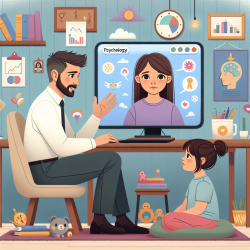Introduction
Brain injuries, whether acquired or traumatic, can have profound effects on movement, presenting a unique set of challenges for therapists. The recent research article, "Disorders of Movement due to Acquired and Traumatic Brain Injury," provides valuable insights into these challenges and offers potential pathways for improving therapeutic outcomes. This blog aims to distill key findings from the research and suggest practical applications for therapists working with children affected by brain injuries.
Understanding Movement Disorders Post-Brain Injury
The research highlights that brain injuries can lead to a variety of movement disorders, including tremor, dystonia, and myoclonus. These disorders often coexist with cognitive deficits, making diagnosis and management complex. For therapists, understanding the nuances of these disorders is crucial for developing effective treatment plans.
Key Findings and Their Implications
- Electrophysiological Studies: Dynamic surface poly-electromyography can help differentiate between movement disorders, such as distinguishing between jerk-like phenomena. This can guide more accurate diagnoses and tailored interventions.
- Medical and Surgical Interventions: While medications can be challenging due to side effects, surgical options like deep brain stimulation show promise, though evidence is primarily limited to case reports.
- Rehabilitation Challenges: Movement disorders often require a multidisciplinary approach, involving physiatrists, neurologists, and speech language pathologists. Therapists should be prepared to address both neurological and psychosocial aspects of care.
Practical Applications for Therapists
Therapists can leverage the research findings to enhance their practice by:
- Integrating Technology: Utilize electrophysiological tools to refine diagnoses and track progress.
- Collaborative Care: Work closely with a multidisciplinary team to provide comprehensive care that addresses both physical and cognitive deficits.
- Continuous Learning: Stay updated with the latest research and consider further studies to explore innovative treatment modalities.
Encouraging Further Research
Despite the advancements, the research underscores the need for more robust evidence, particularly in medical management and rehabilitation strategies. Therapists are encouraged to contribute to this growing body of knowledge through clinical trials and case studies, helping to bridge the gap between research and practice.
Conclusion
For therapists dedicated to improving outcomes for children with brain injuries, staying informed about the latest research is essential. By applying evidence-based strategies and embracing a collaborative approach, therapists can significantly enhance the quality of care they provide.
To read the original research paper, please follow this link: Disorders of Movement due to Acquired and Traumatic Brain Injury.










